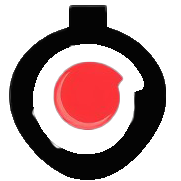A toxic algae has led to an uptick in sea lion attacks on beachgoers in Southern California, according to experts in the area.
The typically docile and playful creatures can become violent and disoriented when infected with domoic acid toxicosis, a neurological disease caused by seasonal algae that is poisonous to sea lions.
In late March, surfer and wildlife enthusiast RJ LaMendola was out on the water when he was ambushed by a sea lion north of Los Angeles.
The 20-year surfing veteran shared in a Facebook post on March 21 that he was riding the waves in solitude when a sea lion appeared out of nowhere and began ferociously charging at him.
LaMendola recalled dodging the creature’s initial approach before it disappeared beneath the water’s surface, leaving him scrambling for the shore.
Before long, the animal reappeared, baring its teeth and looking like “a deranged predator,” this time making forceful contact with his board, according to his post.
After a short struggle, the sea lion sunk its teeth into LaMendola’s buttocks and dragged him into the water.
“I don’t know how to describe the fear that gripped me in that moment. So far from shore, so helpless, staring into the face of this creature that looked like nothing I’d ever seen—its expression was feral, almost demonic, devoid of the curiosity or playfulness I’d always associated with sea lions,” he wrote.

Get daily National news
Get the day’s top news, political, economic, and current affairs headlines, delivered to your inbox once a day.
He managed to break free and wrestled his way back onto his board, avoiding three to four additional attempts by the sea lion to pull him under.
The creature stalked him back to the beach.
Bleeding, LaMendola drove himself to the hospital, where he was treated for his wounds.
LaMendola recovering in hospital after being bitten by a sea lion in Southern California in late March.
Rj LaMendola / Facebook
LaMendola says he later reached out to the Channel Island’s Wildlife Institute, who informed him that it was dealing with a wave of attacks across Santa Barbara and Ventura County involving sea lions and other marine life affected by domoic acid toxicosis.
John Warner, CEO of the Mammal Care Center in Los Angeles, which is also treating wildlife affected by the disease, told the BBC that sea lions are not “naturally aggressive” but that the toxins alter their behaviour.
“These animals are reacting to the fact that they are sick… they’re disoriented, and most likely, most of them are having seizures, and so their senses are not all fully functional as they normally would, and they’re acting out of fear,” he explained.
Sea lions ingest smaller creatures such as anchovies and sardines who eat the poison algae, which has bloomed seasonally in California for the past four years.
According to the BBC, the bloom began earlier than normal this year and spread about 370 miles (595 km) along the California coastline.
South of where LaMendola was attacked, a 15-year-old girl was participating in a swim test a few days ago when an infected sea lion bit her.
Phoebe Beltran was taking part in a 1,000-yard swim in Long Beach on Sunday in lifeguard tryouts when the incident occurred, CNN reported; her mother was on the beach at the time.
“I was just so scared, so shocked, but I still felt the immense pain on my arms, like, over and over again,” she told KCAL News, adding that the sea lion repeatedly grabbed and held on to her and that she was struggling to understand what was happening.
The wildlife centre is currently inundated with an influx of sick animals. According to Warner, the organization treated at least 195 sea lions between February 20 to the end of March. During the same time frame last year, the centre saw only 50 of the animals, the BBC says.
If treated properly, sea lions have between a 50 and 65 per cent chance of recovery.
Treatment includes anti-seizure medication, tube feeding, sedation, and hydration.
© 2025 Global News, a division of Corus Entertainment Inc.













